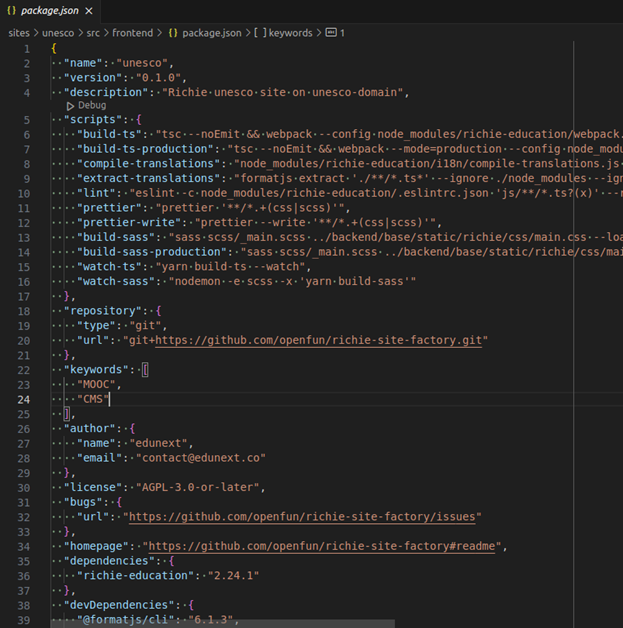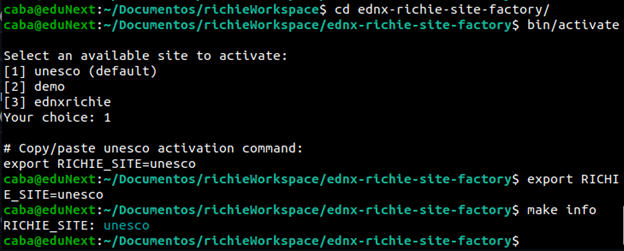3.7.2. Detailed Installation Procedure for Richie CMS#
This section describes how to install Richie CMS in a local environment using the ednx-richie-site-factory repository.
3.7.2.1. What is the ednx-richie-site-factory repository?#
The ednx-richie-site-factory repository contains the Richie sites. You can use this repository for Richie development and test your changes locally, as it allows you to create a working environment with Docker and a set of working commands.
The prerequisite to work with ednx-richie-site-factory is to have the latest version of Docker and Docker Compose installed.
3.7.2.2. How to Run a Richie Site Using the ednx-richie-site-factory Repository#
Let us see how to run the GTC site in a local environment using the ednx-richie-site-factory repository on the Ubuntu operating system.
Create a working directory and move from there. For this tutorial, a directory called richieWorkspace has been created using the following command.
Clone the ednx-richie-site-factory using the following command.
Once the repository has been cloned, go to the directory using the command line and use the following commands to activate the GTC site.
Now we can start the UNESCO GTC project by executing the following command.
make bootstrap
This command builds the containers, starts the services and performs database migrations.
Once your site is up and running, you can check on localhost:8070 in your web browser. In order to get access to Django CMS, please go to localhost:8070/admin.
This is the image you should have as a successfully installation process:

3.7.2.2.1. Make Commands in ednx-richie-site-factory#
The repository has a set of work commands that will allow to perform any development tasks in a simple way, these commands start with the prefix make <order>. To see the complete list of available commands along with a brief description run the command below.
make help
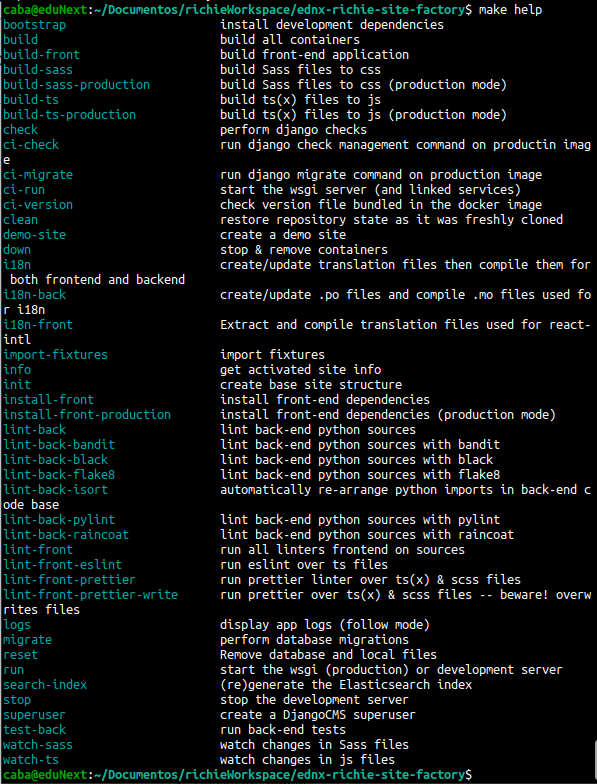
3.7.2.2.2. Create a Superuser Account#
To create a superuser account that will allow to have access to DjangoCMS use the following command.
make superuser
For the example below, we used the following information:
Email: admin@example.com
Username: admin
Password: admin
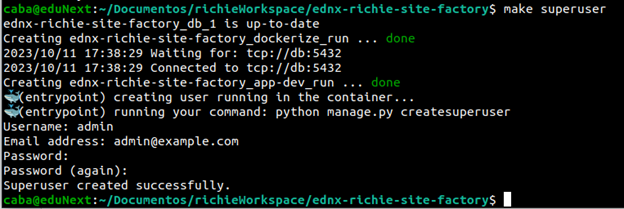
3.7.2.2.3. Configuration Files for the UNESCO GTC Site#
To make any changes to the Django configuration for the richie GTC project you can modify the settings.py file located at sites>unesco>src>backend>unesco.
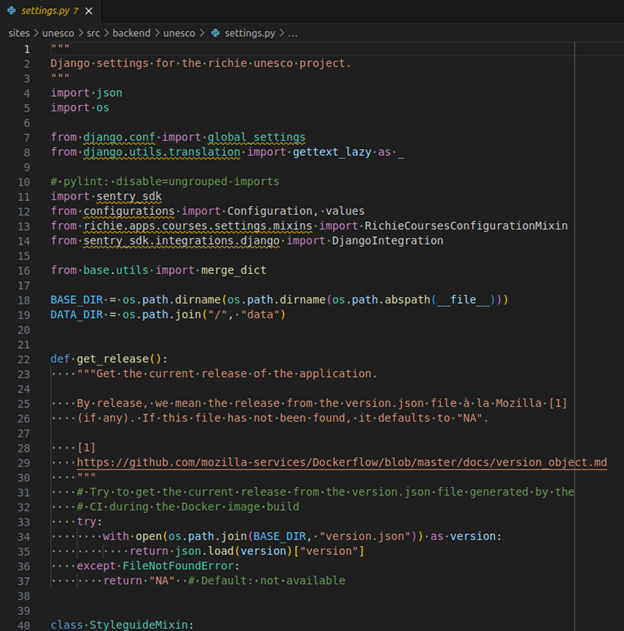
On the other hand, to modify the react settings, you can modify the package.json file located at sites>unesco>src>frontend.
